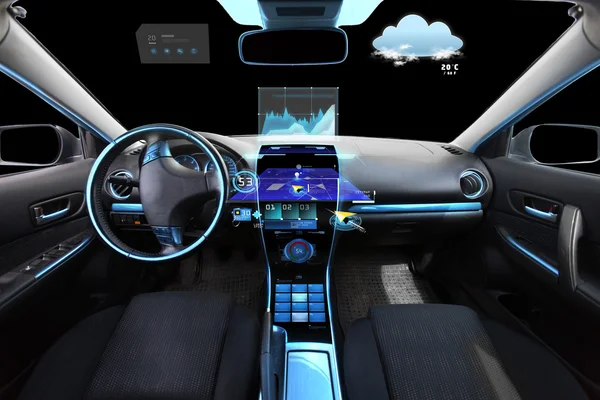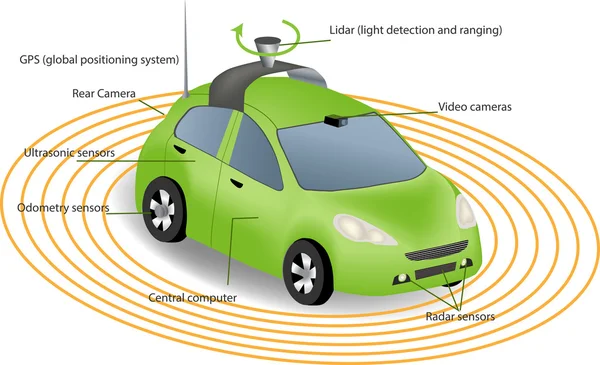A complete guide to Auto Glass parts and its technologies...
Auto Glass Technology: Types and Details

Today, many modern vehicles use a range of state-of-the-art technologies in their auto glass. In addition to being glass, the modern auto glass includes a wide range of technologies. When you’re behind the wheel, glass technology alerts you of dangers and detects objects or animals you encounter on the road, keeping you safe.
The auto glass throughout the vehicle and on your windshield has undergone revolutionary glass technologies that have improved driver security, including your vehicle’s identification number on the windshield glass, is one of these improvements.

1] Advanced Driver Assistance Systems (ADAS)
Many types of ADAS, or Advanced Driver Assistance Systems, work together to enhance vehicle safety by warning the driver of potential problems and avoiding collisions. A warning is sent if the vehicle’s path deviates from the lane or a nearby vehicle.
Automobiles are the foundation of the next generation of mobile-connected devices, and autonomous vehicles are seeing rapid advancement. These autonomous application solutions are divided into SoCs (systems on a chip). Sensors are connected to actuators via interfaces and high-performance ECUs (electronic controller units).
A self-driving vehicle employs various applications and technologies to acquire 360-degree vision, both near (in the vehicle’s immediate vicinity) and distant. In other words, hardware designs utilize more sophisticated process nodes to meet higher performance demands while reducing power and footprint demands.
2] Light Sensor:
Many modern vehicles have automatic headlights, eliminating the need for drivers to turn on their headlights at dusk, dawn, night, or during poor weather and storms. However, have you ever wondered how your car knows when the headlights should be turned on?
Here, the light sensor plays its role. You may not have noticed it, but one is on your windshield.
An automobile light sensor is a device that measures the quantity of light and regulates the vehicle’s headlights to maintain a particular illumination level. To find out if you have one, look for whether or not your headlights switch on or off automatically based on the quantity of light outside. If they do, you probably have an automobile light sensor installed.
3] Rain Sensor:
If your car has a rain sensor system installed, it’s simple to spot. Rain sensors and light sensors are generally indistinguishable. Does your wiper start automatically when it starts raining? If yes, then you definitely have the rain sensor.
An outside view of your vehicle’s cabin will reveal the sensor, which is located behind the rearview mirror and can be identified by a strip of lens or film facing outward.
4] VIN
Every automobile and other motor vehicle is identified by a unique vehicle identification number (VIN) or chassis number, which includes the serial number provided by the vehicle manufacturer.
All vehicles on the road must have a VIN, which provides information such as country of origin, make and model, etc. Installing VINs on automobiles became standard practice in 1954 from the National Highway and Transit Safety Administration.
5] Heads-up display
Head-up displays (HUDs) project images onto the windshield so that the driver does not have to look away from the road. A HUD is a car technology that displays the same information you would get from your dashboard, keeping you focused on the road.
Modern vehicles still use this type of system, which was initially designed for and utilized on military aircraft to provide all necessary data.
6] Infrared-reflective windshield glass
Has it ever occurred to you that you use your vehicle’s air conditioner less often when the weather is hot? If so, you may be driving a vehicle with infrared-reflective windshield glass. The purple-ish fog that appears when you look at the vehicle from outside may alert you to this solar glass, which is more than an anti-glare windshield.
It is advisable to consult the manufacturer, the owner’s manual, or service records to ensure that IR glass looks just like regular windshield glass and might help you save on fuel costs in the long run.
7] Heated windshield
The easiest way to find out whether your car has a heated windshield is:
- Check out the bottom of your car’s windshield where the wipers are fixed.
- You may notice small wires inside the windshield glass, like those seen on rear defrosters.
- These wires are hidden in the front windshield, but if they are visible, then your windshield is heated.
8] Shade band
If there is a 3”-6” strip of darker tinted glass at the top of your windshield where it meets the roof, your vehicle has a shade band. Because this feature is not required to drive on the road, be aware if your vehicle has one. It’s not standard.
Drivers are protected from glare by a shade band. A sun visor strip is positioned below the roof and just above the interior windshield visor. Your view will not be obstructed if you block the sun with the strip.
9] Night Vision
It’s essential to read the owner’s manual before purchasing a vehicle with night vision, as this is a standard option. Infrared and thermal sensors are typically positioned in the vehicle’s grille, and their images are displayed on the center console or dashboard screens. Older technology uses an onboard computer to display traffic on the windshield as a heads-up display. These systems are usually managed by the central console computer.
Did you know that all the glasses in your car are known by different names? If not, you can read the article A complete guide to Auto Glass parts and its technologies.
Popular Searches
Audi Windshield Replacement in Santa Clara County
Auto Car Window Tinting in Santa Clara County
Auto Glass Repair and Replacement in Santa Clara County
Auto Glass Repair in Santa Clara County
BMW Windshield Chip Repair in Santa Clara County
BMW Windshield Repair and Replacement Services in Santa Clara County
Car Window Repair in santa clara
Car Window Repair in Santa Clara County
Commercial truck windshield replacement
Dodge Windshield Repair and Replacement Services in Santa Clara County
Dodge Windshield Replacement in Santa Clara County
Glass repairs for cars near me
Honda pilot windshield replacement cost
Honda Windshield Repair and Replacement Services in Santa Clara County
Honda Windshield Replacement in Santa Clara County
Hyundai Tucson windshield replacement
Hyundai Windshield Repair and Replacement Services in Santa Clara County
Hyundai Windshield Replacement in Santa Clara County
Jeep Windshield Repair and Replacement Services in Santa Clara County
Jeep Wrangler Windshield Replacement in Santa Clara County
Kia Windshield Repair and Replacement Services in Santa Clara County
Kia Windshield Replacement in Santa Clara County
Mobile Auto Glass in Santa Clara County
Mobile Auto Glass Repair in Santa Clara County
Mobile glass replacement near me
Same day windshield repair near me
Toyota Camry side mirror glass replacement
Windshield Calibration in Santa Clara County
Windshield Chip Repair in Santa Clara County
Windshield chip repair near me
Windshield Repair and Replacement Services in Santa Clara County
Windshield Repair and Replacement Services Near Me
Windshield Repair in Santa Clara County
Windshield repair service near me
Windshield Replacement Near Me
Windshield Replacement Services in Santa Clara County
Read more Articles
Tips for Driving in the Snow: The Ultimate Guide to Winter Driving
Tips for Driving in the Snow: The Ultimate Guide to...
5 Things You Should Know About A Windshield Spider Crack
5 Things You Should Know About A Windshield Spider Crack...



